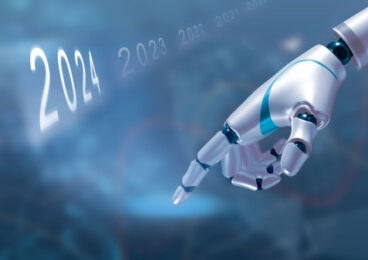 Reading Time: 7 minutes
Reading Time: 7 minutes
Google announced a Privacy Sandbox initiative in 2019 to improve privacy for web users and to change the way they use user data in Internet Advertising. As part of that initiative, Google recently announced that they will completely phase out third-party cookies by Q4 of 2024 — a move that has shaken advertisers worldwide.Third-party cookies make up for a large amount of user data collected by Google and other advertising platforms to help advertisers target their ideal customers online. Without this data, advertisers will be forced to find new ways to reach the right internet users with privacy-focused solutions for the best ROI.
But how much would this affect your ad campaigns? Will it mean that your online ads will no longer be as effective? Is there anything you can do to prepare yourself before the phase-out is complete?
In this blog post, we answer these questions and more.
What Are Third-Party Cookies?
Have you ever visited an airline website to check tickets to a certain destination, only to find yourself getting all sorts of travel ads regarding that destination later on?
These kinds of ads are possible due to third-party cookies.
Third-party cookies let ad tech platforms track users’ online activities across multiple websites and build a comprehensive understanding of how users behave online. By tracking what kind of websites you visit and what you do on each of those sites, tech platforms like Google can create an extensive user profile that pinpoints your current needs. This allows advertisers to serve you ads that are highly relevant to your immediate interests and preferences.
In a world without third-party cookies, advertisers will no longer be able to target users based on their online behaviors across the web. But what does that mean in practice?
Let’s say, you Googled “things to do in Paris” and visited travel blogs. Third-party cookies would determine with your location that you’re not located in Paris at the moment, and are likely planning to travel there in the future. This online behavior would then make you someone travel companies in Paris want to target — even if you haven’t visited their website yet.
Now, Google ads would include you in their audience segments for advertisers that want to target people with an affinity for travel to Paris. The chances are that you’ll start seeing ads from hotel platforms and airlines that fly to Paris after visiting the travel website. This is all because of third-party cookies.
In the absence of third-party cookies, advertisers from third-party websites that don’t know a user has shown an interest in travel to Paris will no longer be able to target them based simply on their past online behavior on other websites. Meaning, a user would have to specifically visit their website for it to collect its user data. This would affect audience targeting in Google ads severely.
What Will Lack of Third-Party Cookies Mean for Businesses and Advertisers?
Without third-party cookies, advertisers will lose granular insights into user behavior, which is expected to lead to lower ad performance and higher costs. Interactive Advertising Bureau (IAB) estimates that ad publishers can lose up to $10 billion in ad revenue.
But with alternatives available, would it still impact advertisers as much? According to the Senior Vice President of IAB, “If digital marketing leaders do not think the loss of third-party cookies will have an impact on their revenue, operations, and products, then they will be in for a rude awakening”. He believes that “This isn’t just a technical issue. This a business issue that will have ramifications rippling throughout the entire organization.”
Additionally, businesses will need to adapt quickly and start developing new strategies in accordance with new technology that will become available to replace third-party cookies.
What Can You Do to Prepare Yourself for the Final Phase Out?
1. Audit Your Cookie Usage and Conduct a Breakage Test:
As third-party cookies allow websites to embed videos, maps, and other content from other websites onto their own — some website owners don’t realize they’re using third-party cookies. As such, there’s a high likelihood that a few parts of your website may stop functioning properly when the policy is fully rolled out.
The first thing you need to do is identify if you’re using any third-party cookies on your website so you can prepare to replace them with other alternatives before Q3 2024. Check your website code to see if you are using any cookies with “SameSite = None” values. These are the cookies you need to fix.
Next, use ChromeDevTools and Privacy Sandbox Analysis Tool (PSAT) tools to conduct breakage tests. Instructions on how to use these are available here.
2. Transition to Learn About CHIPS and Topics API
As part of the Privacy Sandbox initiative, Google has launched its own alternatives to third-party cookies called CHIPS and Topics API.
The Topics API helps advertisers show you ads for things you’re interested in without spying on which websites you visit. Instead of tracking your every move online, it looks at what you seem to like based on what you’ve clicked on or read recently. This way, advertisers can still try to sell you things you might want, and websites can make money from ads, all while keeping your privacy safe.
Here’s what Google says about it:
“With the Topics API, the browser observes and records topics that appear to be of interest to the user, based on their browsing activity. This information is recorded on the user’s device. The Topics API can then give API callers (such as ad tech platforms) access to a user’s topics of interest, but without revealing additional information about the user’s browsing activity.”
Here’s how it works:
Let’s say you’ve been browsing content about home improvement on various websites. While ad platforms like Google can’t track your specific activity across these sites without third-party cookies, the browser can still observe your interest in home improvement based on the content you interact with. It then records this interest on your device without revealing the specific websites you visited.
Now, when advertisers want to show you relevant ads related to home improvement services, they can access the topics of interest recorded by the Topics API on your device. This way, advertisers can still target you with relevant ads without needing to track your browsing activity across different websites.
Similarly, CHIPS changes the way third-party cookies work. Meaning you can still use third-party cookies but they will now have their own partitioned states. What this means is that rather than sharing cookies between all sites, each website will have a separate top-level jar.
As an example:
Imagine you’re visiting a website called Site A that hosts videos from another website, called C. With partitioned cookies, if Site C tries to give you a cookie while you’re on Site A, that cookie will only go into a special box that Site A has set aside just for Site C’s cookies.
This means that the cookie will only be sent back to Site C when you’re back on Site A, not anywhere else on the internet. So, it’s like Site A is making sure Site C’s cookies stay in their own little box and don’t go wandering around everywhere else you go online.
You can learn more and opt for CHIPS here and Topics API here.
3. Ask for Third-party Cookie Exceptions
For websites that heavily rely on third-party cookies to provide a pleasant user experience, Google is offering a temporary exception. This exception gives you some extra time to move away from third-party cookies and is only applicable for non-advertising purposes.
They are currently only considering websites whose core functionality will break down in the absence of third-party cookies. You can learn more about participating in the depreciation trials and see if you are eligible here. To apply, you’ll need to report how the phase-out will affect your website’s functionality. Follow the instructions on this page to start.
4 Solid Alternatives to Third-Party Cookies You Need to Consider
1. First-Party Cookies
Unlike third-party cookies that track your entire web usage, first-party cookies only track your data when you are actually using a specific website. This means that while external sources like Google Chrome can’t track user data in the same way, you can still continue to get valuable insight into user behavior on your website.
By capturing data on users’ interactions and preferences during their visits to their website, advertisers can create customized experiences for returning visitors. For instance, if a user browsed specific product categories or shown interest in particular content on the website, first-party cookies can enable you to target them with ads tailored to their preferences.
You can also use this data to create first-party audiences on advertising platforms such as Google ads, and segment users based on their behavior and interactions on your website. Based on your segmentation, you can show different ads to different types of users. For example, you can retarget those who left without making a purchase to nudge them in that direction, or you can target users who have previously made purchases or shown interest in related products with personalized offers or promotions to encourage repeat purchases.
2. Universal IDs
Internet providers, advertisers, and/or website owners can implement an algorithm that assigns a unique identification to each user based on their device information, browser settings, and user behaviors. They typically also use information such as email addresses, social media accounts, and phone numbers to create each user’s digital user profile. These universal IDS are then used to track the user’s online activities and behavior across different websites or platforms. As the information gathered with these IDs is likely highly specific to an individual, it allows for targeted advertising without getting in trouble with GDPR and CCPA regulations.
Note: For mobile ads, you can also use mobile advertising IDs (MAIDs), which is a similar digital profile created by a mobile operating system. Although MAIDs are specific to mobile devices, universal IDs and MAIDs serve similar functions in enabling cross-device tracking and targeted advertising.
3. Contextual Targeting
Have you seen blogs where the ads you see are related to what you’re reading about? These ads are examples of contextual ads, which focus on the environment a user is in rather than their entire behavioral profile. This means that a user will only see ads based on activities they’re engaging in on a particular website and their previous web history doesn’t matter as much.
Moving to contextual advertising can be a great way to fill the absence of programmatic advertising that relies primarily on data from third-party cookies. In contrast, contextual advertising relies primarily on session cookies, which expire after a browsing session has ended.
Plus, contextual ads are likely to have a higher conversion rate. Since users are already reading about a topic, chances are they are actively looking for solutions that your services/productions help with. Showing related ads can also nudge them to the next stage of the buying journey from the “information-gathering” stage.
4. Device Fingerprinting
Device fingerprinting is a method used to identify and track devices based on unique characteristics like browser settings, installed fonts, and screen resolution.
Using unique device attributes, advertisers can map out a user’s digital footprint. This fingerprint enables you to do targeted advertising while navigating privacy regulations and restrictions on cookie usage.
Final Thoughts
We are already approaching the end of Q1 of 2024, and the third-party cookies phase-out is projected to be completed this year. If you are a business owner who relies on digital advertising, you need to start looking for alternatives right away so you’re not caught off guard when the time finally comes.
Sure, third-party cookies played a major role in behavioral targeting in advertising and the shift to alternatives won’t come without some initial losses. But there’s no escaping the future. Plus, you’re not the only advertiser who’ll suffer without third-party cookies; your competitors will too. So think of this as starting from an even field again, and having an opportunity to get a leg up on the competition with advanced planning and strategizing.
Consider getting started with alternatives such as first-party cookies, universal IDs, contextual targeting, and device fingerprinting that exist now so you can figure out how these fit into your digital strategy before the hammer drops.
At Vizion Interactive, we have the expertise, experience, and enthusiasm to get results and keep clients happy! Learn more about how our status as a Google Partner, along with our PPC Management, Google Shopping Ads, Social Media Advertising, Amazon Advertising, and other Paid Media services can increase sales and boost your ROI. But don’t just take our word for it, check out what our clients have to say, along with our case studies.




